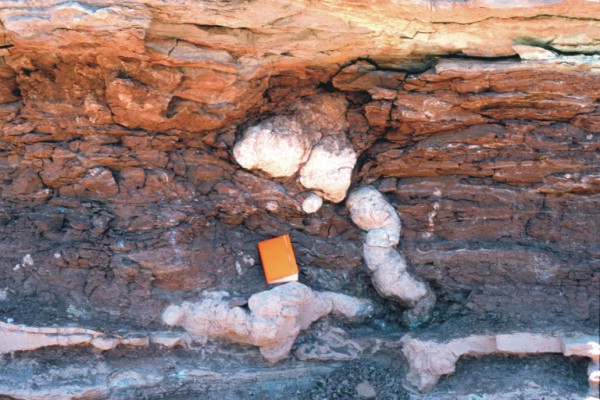Continuing on the Austin Chalk
So, the challenge for me by my creationist friend was to explain the Austin chalk because he apparently believes its existence is supportive of a global flood. I don't know where he got the idea that massive Cretaceous chalk deposits were evidence for a global flood because they are typically held forth as evidence AGAINST the global flood. Nevertheless.....
As I noted yesterday, creationist Steve Austin places the Cretaceous chalk deposits in the latter part of the year-long flood. Austin creates a scenario through which the photic zone in the turbulent, volcanic-laden, rain-soaked oceans manages to be 5 times thicker than in normal oceanic water and argues that such turbulent conditions favor blooms.
As fantastic as that sounds, I was more intrigued to learn that Austin actually placed these deposits within the 'latter stages of the flood'. This is important because I've long taken creationists to task for not being able to specify what rocks are pre, syn and post flood. So, at least we know that the Cretaceous chalk deposits are late 'syn-flood'. While that does not tell us specifically where all the rest of the geologic column was formed during the flood, it does allow us to make a few conjectures. So here goes:
(1) In creationist geology, the flood must be THE defining event in the rock record. There is no other mechanism by which to form the vast thicknesses of sedimentary rock on the globe absent the flood.
Based on (1) and the conclusions of Austin, I think it is safe to say that what geologists call 'Jurassic' and "Triassic" strata must also be syn-flood sedimentary deposits. That means that during the deposition of these strata, the world was covered with water and that water was turbulent and that massive rain was falling on the ocean and that massive volcanic eruptions were occurring as the fountains of the deep ruptured (based on creationist Austin's description).
I have some questions :). How were termites able to build giant nests during this global tempest? Below is a photo of a Jurassic termite mound discovered by Dr. Steve Hasiotis

Furthermore, how is it that we had forest fires during this global flood. Below is a photo of petrified wood (burnt) from the Chinle Formation (Triassic) in New Mexico:
 (Photo by J. Meert).
(Photo by J. Meert).Then there is the little issue of the vast number of paleosols found throughout Triassic and Jurassic strata. How exactly did those form during the global flood? These complete with infilled burrows (photo by Steve Hasiotis)!!

So, you see I never would have chosen the Austin chalk as an example of the global flood. Too many problems that are not easy to hide---unless you can rationalize those problems away with unrealistic invented scenarios---
I'll repeat my challenge to ye-creation geologists and their supporters:
a. Where can a geologist find, on a global basis, the pre-flood/flood boundary? You will not find a continent-by-continent listing of formational names and type sections for this boundary in the creationist literature.
b. Where can a geologist find, on a global basis, strata laid down during the peak of the global flood (i.e. globally correlatable strata all deposited under water)? You will not find a continent-by-continent listing of formational names and type sections for these rocks in the creationist literature.
c. Where can a geologist find, on a global basis, the flood/post-flood boundary? You will not find a continent-by-continent listing of formational names and type sections for this boundary in the creationist literature. To be fair, creationists have a little more leeway in defining this boundary since the flood waters receded over a slightly longer time interval, but it still should be possible to provide considerable detail.
Cheers
Joe Meert

0 Comments:
Post a Comment
<< Home